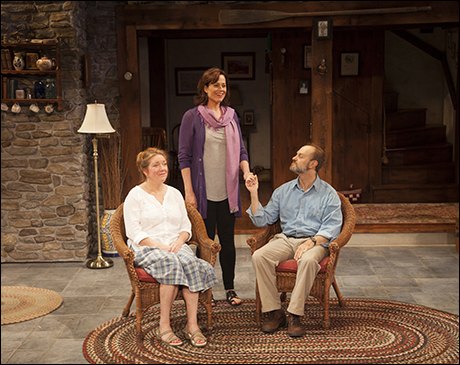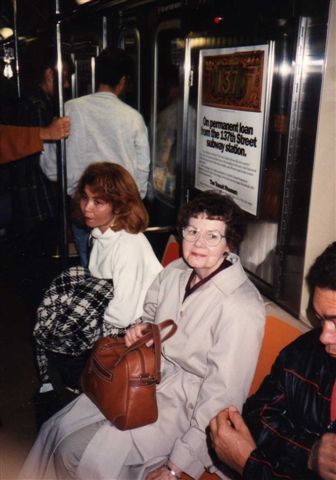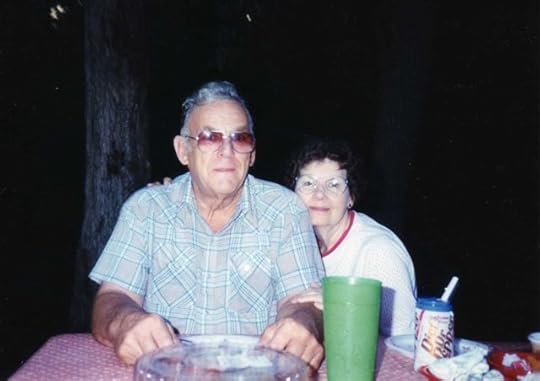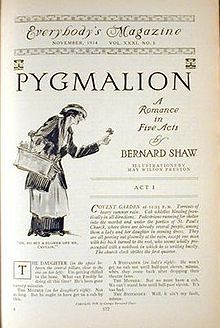Terry Teachout's Blog, page 118
November 22, 2012
TT: Kid stuff at the Clark
* * *
Most Americans take it for granted, as well they should, that in a democracy, the experience of going to an art museum should be made more widely accessible. But any museum that starts down the twisty road of cultural democratization can lose sight of its overarching mission, which is to preserve and protect great works of art, make them accessible to the public and teach its visitors how best to look at them. This last involves deploying the institutional expertise of its curatorial staff in the service of defining what it means to call art "great." Yet I've been to more than a few museums whose patrons were so busy dining in the café, listening to noontime concerts and shopping for knick-knacks that scarcely any of them bothered to look at the art on the walls.
 How can established museums reach out to new viewers without compromising their time-honored function? One approach is now being tried out at the the Clark Art Institute of Williamstown, Mass., which has just launched a program called "uCurate." Visitors to the Clark are invited to download a digital app that allows them to design imaginary art exhibitions made up of pieces in the museum's permanent collection, then enter them in a competition whose winners get to install their shows in a gallery at the Clark with the help of the staff.
How can established museums reach out to new viewers without compromising their time-honored function? One approach is now being tried out at the the Clark Art Institute of Williamstown, Mass., which has just launched a program called "uCurate." Visitors to the Clark are invited to download a digital app that allows them to design imaginary art exhibitions made up of pieces in the museum's permanent collection, then enter them in a competition whose winners get to install their shows in a gallery at the Clark with the help of the staff.The Clark's first uCurator is Giselle Ciulla, an 11-year-old girl who has put together a show called "Giselle's Remix" which consists of 18 paintings, sculptures and objets d'art by Corot, Degas, Renoir, Winslow Homer, George Inness and other artists. She has also written the wall labels, of which this one, for Homer's "Sleigh Ride," is representative: "I like how the only thing is the sleigh, like nothing else is alive, just the horse and the rider."
It's easy to see what the Clark, an admirable but decidedly unsexy institution whose conservative collection consists in the main of 19th-century French paintings, is up to. "Giselle's Remix"? "uCurate"? We're talking young here. The program might as well be called "U 2 Can B a Curatr."...
* * *
Read the whole thing here .
TT: Once more, with production numbers
* * *
 Recipe for a successful commodity musical: (1) Obtain the stage rights to a well-liked film. (2) Write a script that sticks close to the original plot, so as not to upset the public. (3) Add safe, uninteresting songs and fancy sets and costumes. (4) Sit back and count the money. This, of course, is also a sure-fire recipe for a dull show, which is why commodity musicals are a blight on Broadway. Once in a while, though, the odd thing happens. "A Christmas Story," the stage version of Bob Clark's charming 1983 film about Ralphie, a sweet little kid from Indiana who longs to find an Official Red Ryder Carbine-Action Two-Hundred-Shot Range Model Air Rifle under the tree on Christmas morning, ought by all rights to be tedious in the extreme--but it isn't. Some of it, in fact, is really good, and none of it is less than watchable.
Recipe for a successful commodity musical: (1) Obtain the stage rights to a well-liked film. (2) Write a script that sticks close to the original plot, so as not to upset the public. (3) Add safe, uninteresting songs and fancy sets and costumes. (4) Sit back and count the money. This, of course, is also a sure-fire recipe for a dull show, which is why commodity musicals are a blight on Broadway. Once in a while, though, the odd thing happens. "A Christmas Story," the stage version of Bob Clark's charming 1983 film about Ralphie, a sweet little kid from Indiana who longs to find an Official Red Ryder Carbine-Action Two-Hundred-Shot Range Model Air Rifle under the tree on Christmas morning, ought by all rights to be tedious in the extreme--but it isn't. Some of it, in fact, is really good, and none of it is less than watchable."A Christmas Story," mind you, follows the recipe in every way. Nothing happens in the show that doesn't happen in the film, all of the now-familiar plot twists are present and accounted for, the members of the cast endeavor mightily to suggest the well-remembered performances of their cinematic counterparts, and the reassuringly obvious song titles include "A Major Award," "Red Ryder Carbine Action BB Gun" and "You'll Shoot Your Eye Out!"
So what works? Quite a lot, actually, starting with the staging. John Rando is a scintillating musical-comedy director--his "Guys and Dolls," mounted last year at Massachusetts' Barrington Stage, was the best revival of that classic musical that I've ever seen--and he and Warren Carlyle, the choreographer, infuse "A Christmas Story" with plenty of liveliness and flair....
 Christopher Durang writes comedies with stiletto-sharp stings in the tail, some of which are devastatingly funny and others exasperatingly messy. "Vanya and Sonia and Masha and Spike" is one of the former, an inside-out medley of Chekhov's Greatest Hits in which key moments from the Russian playwright's oeuvre are scrambled into a camp cartoon about a melancholy Pennsylvania family whose members (Kristine Nielsen, David Hyde Pierce and Sigourney Weaver) were named by their theater-loving parents after characters from "Three Sisters" and "Uncle Vanya." The trick up Mr. Durang's sleeve is that the play's onstage lunacy is the distorted outward manifestation of the deep-seated sorrows of its protagonists, especially Sonia (Ms. Nielsen), a sad sack who gets her biggest laughs simply by telling the awful truth about her unfulfilled life: "My relationships with men have been limited to 'Here's your change, ma'am' at the supermarket."
Christopher Durang writes comedies with stiletto-sharp stings in the tail, some of which are devastatingly funny and others exasperatingly messy. "Vanya and Sonia and Masha and Spike" is one of the former, an inside-out medley of Chekhov's Greatest Hits in which key moments from the Russian playwright's oeuvre are scrambled into a camp cartoon about a melancholy Pennsylvania family whose members (Kristine Nielsen, David Hyde Pierce and Sigourney Weaver) were named by their theater-loving parents after characters from "Three Sisters" and "Uncle Vanya." The trick up Mr. Durang's sleeve is that the play's onstage lunacy is the distorted outward manifestation of the deep-seated sorrows of its protagonists, especially Sonia (Ms. Nielsen), a sad sack who gets her biggest laughs simply by telling the awful truth about her unfulfilled life: "My relationships with men have been limited to 'Here's your change, ma'am' at the supermarket."Not only does Ms. Nielsen have the best part, but she gives the best performance of the evening, the high point of which is a phone-call monologue that is as smartly written as any of Mr. Durang's glittering comic sketches....
* * *
Read the whole thing here .
A preview of the Lincoln Center Theater production of Vanya and Sonia and Masha and Spike:
November 21, 2012
TT: So you want to see a show?
Here's my list of recommended Broadway, off-Broadway, and out-of-town shows, updated weekly. In all cases, I gave these shows favorable reviews (if sometimes qualifiedly so) in The Wall Street Journal when they opened. For more information, click on the title.
BROADWAY:
• Annie (musical, G, reviewed here)
• Bring It On (musical, G, closes Dec. 30, reviewed here)
• Evita (musical, PG-13, reviewed here)
• The Mystery of Edwin Drood (musical, PG-13, most performances sold out last week, reviewed here)
• Once (musical, G/PG-13, most performances sold out last week, reviewed here)
• Who's Afraid of Virginia Woolf? (drama, PG-13/R, reviewed here)
OFF BROADWAY:
• Avenue Q (musical, R, adult subject matter and one show-stopping scene of puppet-on-puppet sex, reviewed here)
• The Fantasticks (musical, G, suitable for children capable of enjoying a love story, reviewed here)
• Giant (musical, G/PG-13, extended through Dec. 16, reviewed here)
• Tribes (drama, PG-13, closes Jan. 6, reviewed here)
GOING ON HIATUS OFF BROADWAY:
• The Freedom of the City (drama, PG-13, closes Sunday, reopens Jan. 2-20, reviewed here)
TT: Almanac (special Thanksgiving edition)
"Sometimes I go to sleep at night and dream about them garbage cans. Or I dream I'm lying in bed at the Waif's Home, smelling the honeysuckle through the window. I can smell it now, just like I'm there. Wake up and say to myself, what'm I doing sleeping in a suite in the Waldorf? How'd I get so lucky?"
Terry Teachout, Satchmo at the Waldorf
November 20, 2012
TT: Almanac
William Haggard, Venetian Blind
TT: Snapshot
(This is the latest in a series of arts-related videos that appear in this space each Monday and Wednesday.)
TT: Family album (I)
In recent weeks I've been thinking about my parents with increasing frequency, no doubt because the success of Satchmo at the Waldorf makes me wish that they'd lived to see it--though I wouldn't have wanted to try to explain to my mother why I'd put such spectacularly obscene language in the mouth of her beloved Louis Armstrong! Be that as it may, it's nice to be able to get a look at them again, and I thought it might possibly amuse you to see two of my favorite photos:
 • I took this one shortly after my parents came to New York for their first and only joint visit in 1983 or 1984. It documents my mother's first subway ride. If memory serves, we were headed down to Rockefeller Center. Even at its best, the New York subway system can be a formidable obstacle course for anyone who's spent the whole of his life in a series of small Midwestern towns, and I have crystal-clear memories of the morning that I escorted my mother down the steps and into the maelstrom.
• I took this one shortly after my parents came to New York for their first and only joint visit in 1983 or 1984. It documents my mother's first subway ride. If memory serves, we were headed down to Rockefeller Center. Even at its best, the New York subway system can be a formidable obstacle course for anyone who's spent the whole of his life in a series of small Midwestern towns, and I have crystal-clear memories of the morning that I escorted my mother down the steps and into the maelstrom.Though she was palpably nervous, she was also a plucky woman who rarely let anything faze her, and this tight-lipped portrait of a middle-aged woman determined not to display her anxiety has never failed to put a smile on my own face.
•
 My father, like so many men of his generation, loved to go "camping," by which he meant staying somewhere other than home in something other than a motel room. First he bought a tent, then a trailer, then a mobile home on Kentucky Lake, then--dream of dreams--a full-fledged motor home, and each summer he did his level best to get out of town as often as possible.
My father, like so many men of his generation, loved to go "camping," by which he meant staying somewhere other than home in something other than a motel room. First he bought a tent, then a trailer, then a mobile home on Kentucky Lake, then--dream of dreams--a full-fledged motor home, and each summer he did his level best to get out of town as often as possible.Needless to say, it was always taken for granted that my mother would come along, since he was incapable of functioning without her. (It would have been unimaginably awful had she predeceased him.) Alas, she hated the camping trips that made him so happy, but she was a loyal and devoted spouse, and on occasion she somehow contrived to enjoy herself. This picture was taken on one of those happy occasions.
Oh, how I miss them both.
November 19, 2012
TT: Almanac
William Haggard, Venetian Blind
TT: Lookback
 From 2003:
From 2003:I've lived in New York for the better part of two decades now, and you'd think I'd have gotten used to it. In a way, I suppose I have, but even now all it takes is a whiff of the unexpected and I catch myself boggling at that which the native New Yorker really does take for granted. As for my visits to Smalltown, U.S.A., they invariably leave me feeling like yesterday's immigrant, marveling at things no small-town boy can ever really dismiss as commonplace, no matter how long he lives in the capital of the world....
Read the whole thing here .
TT: A Shavian romp
Next up: Saint Joan, on December 17. Don't miss it.
If you're curious, here's what I had to say. Regular readers of this blog may notice that I lifted part of my introductory remarks from a recent Wall Street Journal "Sightings" column. Nobody noticed, so don't tell!
* * *
It's a pleasure to be here, and to talk about Shaw, an artist whom I admire greatly in spite of the fact that we have, so far as I know, only one thing in common. Like him, I'm now a critic and a playwright. Now that I've worked both sides of the proscenium, I know better than ever before that there are many things about the theater that can't be learned from an aisle seat! I think I'm a better critic for having written a play and two opera libretti, and I dare say that Shaw might well have become a better playwright for having spent time as a working critic. At any rate, he certainly knew how seriously to take his reviews!
 But enough about me--a sentence that Shaw, so far as I know, never spoke in his life. Let's talk about Pygmalion for a moment. Nowadays most theatergoers know Eliza Doolittle and Henry Higgins from My Fair Lady, in which Lerner and Loewe sprinkled sugar all over Shaw's greatest comedy. The real Pygmalion, by contrast, is a double-edged satire of the British class system that takes no less cutting a view of the progressive reformers who, like Shaw himself, sought and seek to flatten it out. He shows us that Professor Higgins, like so many of his well-meaning kind, prefers people in the mass to individual human beings. He treats Eliza like a lab rat, not a creature of flesh and blood, and her scornful dismissal of his high-minded heartlessness rings as true today as it did in 1913.
But enough about me--a sentence that Shaw, so far as I know, never spoke in his life. Let's talk about Pygmalion for a moment. Nowadays most theatergoers know Eliza Doolittle and Henry Higgins from My Fair Lady, in which Lerner and Loewe sprinkled sugar all over Shaw's greatest comedy. The real Pygmalion, by contrast, is a double-edged satire of the British class system that takes no less cutting a view of the progressive reformers who, like Shaw himself, sought and seek to flatten it out. He shows us that Professor Higgins, like so many of his well-meaning kind, prefers people in the mass to individual human beings. He treats Eliza like a lab rat, not a creature of flesh and blood, and her scornful dismissal of his high-minded heartlessness rings as true today as it did in 1913.I think that much of Shaw's effectiveness as a dramatist of ideas inhered in his absolute willingness to give the devil his due, and I think that Pygmalion might just be the best example of that willingness. But Shaw was no less alive to the contradictions in his own nature than to those in his characters, most of whom are mirrors in which bits and pieces of their creator are vividly reflected. Instead of making love, they talk rings around it--even the ones who long most for intimacy. They believe in rationality, but embrace the apocalypse of total war with a pathetic blend of ecstasy and relief, just like Shaw, who opposed British involvement in World War I but was himself a power-worshipper with a totalitarian itch who believed passionately in human perfectibility. And though they joke and joke and joke, they're always kidding on the square, telling their brutal truths with such impish charm that you scarcely feel the knife slipping in until the blood starts to flow.
That is Shaw in a nutshell. He is a serious comedian, an artist who knows that in most human lives, absurdity and sorrow are woven together too tightly to be teased apart--and that it is comedy, not tragedy, which illustrates that fact most fully. Life is too complex to be painted solely in shades of black. Even as Shakespeare made room in Lear for the Fool, so does Shaw make room in his theatrical sermons for the pungent humor that, as Henry James so truly said, is the saving salt. So tonight, let us laugh with him...and at ourselves.
* * *
George Bernard Shaw on capital punishment:
Terry Teachout's Blog
- Terry Teachout's profile
- 45 followers



